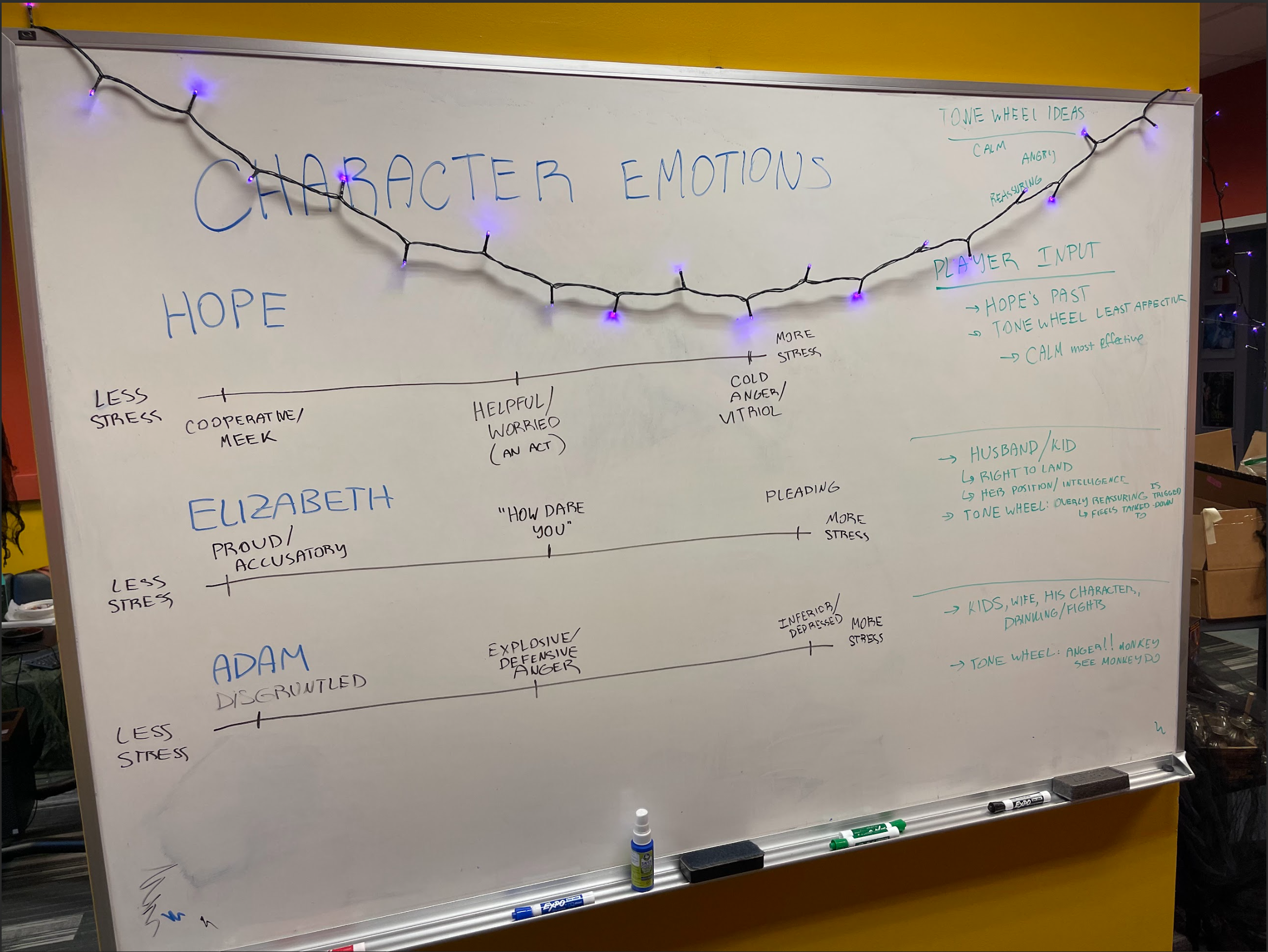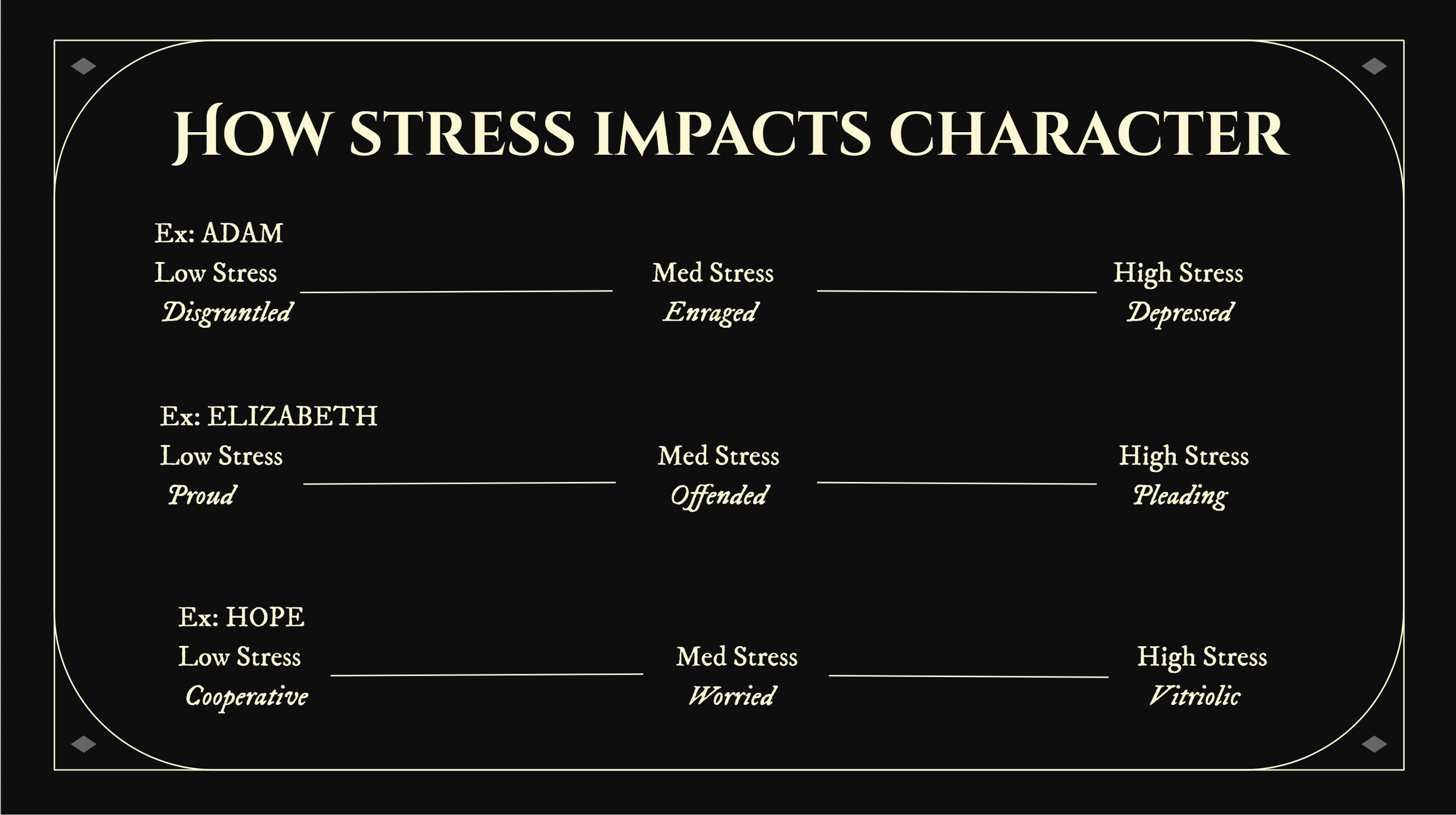November 2022 - May 2023
Hysteria in Howlsbend
Generative AI Driven Narrative Game
Description
Hysteria in Howlsbend is a Narrative-Driven interactive experience powered by ChatGPT. When the beloved Reverend of the town of Howlsbend is affected by witchcraft, the Player must take on the role of the Deputy Governor of Massachusetts and interview the three suspects to discover who, if anyone, is responsible.
Throughout each interview, the Player can type any piece of dialogue possible, be it a question, statement, or action, and the character will respond with an unlimited set of answers, improvised based on the information and conversational tone our team has given on the backend to ChatGPT.
The game was developed as a pitch project at Carnegie Mellon’s Entertainment Technology Center and was approved as a semester project for the Spring of 2023.
Process
Hysteria In Howlsbend was a student pitch created to test how narrative designers might use AI to create new narrative-based experiences. Our team’s goal was to create a conversation with a character where the Player could ask any question possible, and the character would improvise and respond appropriately.
The closest thing we had to that type of experience was the live-action roleplay you might have with a GM during a tabletop RPG session. The first thing our team did was create a roleplaying game based on a very basic scenario from our story, playtest, and see what we might need to accomplish digitally to recreate a good roleplaying experience.
The Team
Initial Playtesting
My teammate Charlie and I sat down to conduct roleplaying sessions based on a simple writeup for the three base characters, taking notes on the Player’s experience and their overall thoughts during the session. We discovered that the most successful playtests were the ones where the Player fully engaged with the roleplaying and character discovery aspects of the game. As such, one of our main objectives in the digital version was to communicate the goal of the game to the Player and emphasize their need to get to know the character they are interrogating.
Emotional State Change
To combat Player confusion and reluctance to roleplay, one of our solutions was to implement an emotional state change for the NPCs. If the Player was successful in asking the right questions, the NPC would transition into a more intense emotion, which would affect both the art, as a visual indicator, and the character’s responses. The character might give more information away to the Player in later states.
We decided that the simplest variable that would change emotional state would be “Stress”, something very present in any interrogation, much less one in a witch trial. The final outline of each character’s emotional state transition is on the right.
Ex: The character of Elizabeth feels proud and superior when she is under low Stress. As the Player puts more and more pressure on her during the interrogation, Elizabeth’s Stress grows, and she becomes offended by the Player’s questions. At her highest Stress level, Elizabeth’s offense turns into desperation as she pleads for her life.
Below is an example of how Hope’s character art would change with the rising level of stress
Narrative Prompt Creation
One of my fundamental tasks on this project was to create a set of dialogue and background references as input for ChatGPT. The spreadsheet below combines both the potential questions the Player might ask the character and the different emotional states outlined for each character.
Adam’s tone of voice and the information he gives away change depending on which Stress State he is in. These snippets of dialogue are examples for ChatGPT to follow but also contain within them vital information the Player must discover about the character and the town at large.
Because we needed to make sure there was no confusion in how the AI interprets these examples, the names, times, and locations have to be specific. We ran into a problem very late in the project where Elizabeth through a character that was supposed to be dead was still alive, all due to using a pronoun instead of a name in the example prompt.
Main Takeaways
This project was designed to test how AI text-generation tools like ChatGPT could allow narrative designers more opportunities with the medium. Creating a game with in-time text responses from the NPCs takes mitigating the potential chaos both from the AI and the Player.
Because the AI’s responses could be anything, no matter how much data you give it, much of the game design process needs to be dedicated to ironing out as many potentially chaotic responses as possible. While my team succeeded in implementing a lot of the solutions, there are many more we have yet to explore.









